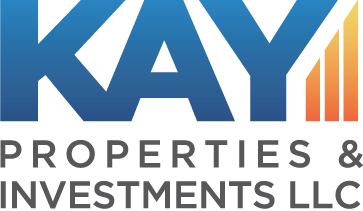By Dwight Kay, Founder & CEO; Betty Friant, Senior Vice President and The Kay Properties Team
“Is that your final answer?” You may recognize the question made famous by the popular TV game show Who Wants to Be a Millionaire? Choosing the right answer in this game gives you a shot at winning big money, while the wrong answer leaves you with nothing. Investors conducting a 1031 Exchange face a similar make or break decision when it comes to identifying suitable replacement properties.
The right choices can help streamline a smooth and successful execution of a 1031 Exchange. Choosing wrong with properties that may not be viable or deals that are unable to close within the 180-day time period can derail the entire 1031 Exchange. The good news is that investors do get to identify more than one replacement property. However, just like the game show, once that 45-day deadline hits for identifying replacement options, those answers are final. Making the most of that short list is one reason that the 200% Rule is a popular choice for many investors. The 200% Rule allows an investor to identify the largest number of replacement options with four or more properties or Delaware Statutory Trust (DST) replacement investments.
Under Section 1031 of the Internal Revenue Code, taxpayers who are seeking to defer recognition of capital gains and related federal income tax liability from the sale of a property are required to formally identify a replacement property or properties within 45-days from the date that the original property is relinquished (the day they closed the escrow on the property they sold). The tax code gives taxpayers three different options for identifying replacement properties on that 45-Day Property Identification Form – the 200% Rule, the 3-Property Rule or the 95% Rule. So, which is the best option to use? Every situation is different. However, for those investors who want to maximize their potential options and identify four or more replacement properties, the 200% Rule is a good choice to explore.
How does the 200% Rule work?
Exchangers can identify any number of properties as long as the gross price does not exceed 200% of the fair market value of the relinquished property (twice the sale price). It is typically used when an investor wants to identify four or more properties. This is the most commonly used rule for investors considering DST investments, because of the flexibility in being able to list multiple properties to build a diversified* DST portfolio. The minimum investment amount for DSTs typically starts at $100,000 whereas most commercial real estate properties are priced above $1 million. So, for an investor who has $1 million to reinvest, they could opt to put all of that $1 million into one DST (which is typically not recommended even when the DST has many properties inside of it), or they can divide that $1 million into as many as 10 completely separate DSTs.
An important mistake to avoid is to make sure the list of identified properties does not exceed the 200% limit. The IRS is a stickler for rules. If the combined price of the identified replacement properties exceeds the 200% maximum limit – even by a fraction of a percent – it won’t be accepted.
Hypothetical Example: Expanding your options
A married couple sold their manufacturing business that included the sale of the property that housed the business, giving the couple $2 million to invest in a 1031 Exchange. The couple plans to retire and both agree that they don’t want a replacement property or properties that will require hands-on management. The husband wants to buy a Triple Net Leased (NNN) fast food restaurant for $1.2 million, while the wife is in favor of a $1.5 million NNN dollar store. Both properties are listed on the 45-Day Form, bringing the total to $2.7 million. They decide to use the 200% Rule, which allows for up to $1.3 million in additional property listings.
The couple agrees to split the remaining $1.3 million across multiple DST investments, and they choose to identify:
- $100,000 in a multifamily apartment DST property located in Denver
- $200,000 in a multifamily apartment DST property located in Dallas
- $250,000 in a debt free DST portfolio of NNN leased pharmacies and e-commerce distribution facilities
- $250,000 in a NNN dialysis facility DST portfolio with locations nationwide
- $500,000 in a DST portfolio of NNN dollar stores
Overall, the 200% Rule allows the couple to identify these seven possible options within their 45-Day period. The DSTs are all packaged and ready to go with closings that can easily close within a week. The couple uses the remaining time to conduct more research and due diligence on the NNN Dollar General and KFC. In the end, they decide to buy the KFC for $1.2 million, but they like the diversity of being about to buy a $500,000 DST interest in a portfolio of dollar stores versus a single location. The remaining $300,000 is spent in the two apartment DSTs.
In this case, the ability to leverage the 200% rule was advantageous in giving the couple more options and more time to make a final investment decision. The outcome also was successful in that their 1031 Exchange was fully executed, and their $2 million is now invested across a diversified portfolio of multiple different income-producing properties versus only one or two. However, it also is important to note that every situation is unique. Individuals should review all three 1031 identification options to choose the rule that works best for your particular situation as well as always should speak with their CPA prior to making any decisions.
*Diversification does not guarantee profits or protect against losses.1031 Property Identification
Investors looking for a DST replacement property would benefit from an understanding of the 1031 identification rules so as to increase the possibility of a successful exchange completion. We help answer important questions like how long to identify 1031 exchange, what is the maximum allowed number of identification properties, and similar others in this section.
How Long to Identify the 1031 Exchange
After the close of the sale of the relinquished property, investors can identify an exchange property in 45 days, or more precisely until midnight of the 45th day. Among the rules of property identification, the most important ones pertain to the methods of identification and the permissible number of properties to be identified.
How to Identify Properly
As soon as investors find a property of interest, it’d be good to identify it as soon as possible; any substitutes can be made later in case they change their mind. Those seeking a less than 100% interest must also specify the percentage of ownership desired along with an unambiguous description of the property. In addition, for properties that are in the construction phase, the details of the project must also be provided.
For “proper” identification, it’d be best to acquire a property within the 45-day duration so it minimizes the possibility of a failed exchange, which would otherwise entail taxes for investors. However, this does not mean that after identifying a property, it cannot be substituted. A previously identified property can be replaced by new property identification, again within the stipulated 45-day period.
How Many Properties Can be Identified?
There are important rules concerning the maximum allowable number of identified properties.
- 3 Property Rule : Regardless of their fair market value, maximum 3 properties can be identified.
- 200% Rule: Regardless of the number of identified properties, their combined fair market value must not exceed 200% of the aggregate fair market value of all relinquished properties.
- 95% Rule: Regardless of the number of identified properties or their aggregate fair market value, the acquired properties must amount to at least 95% of the fair market value of all identified properties.

